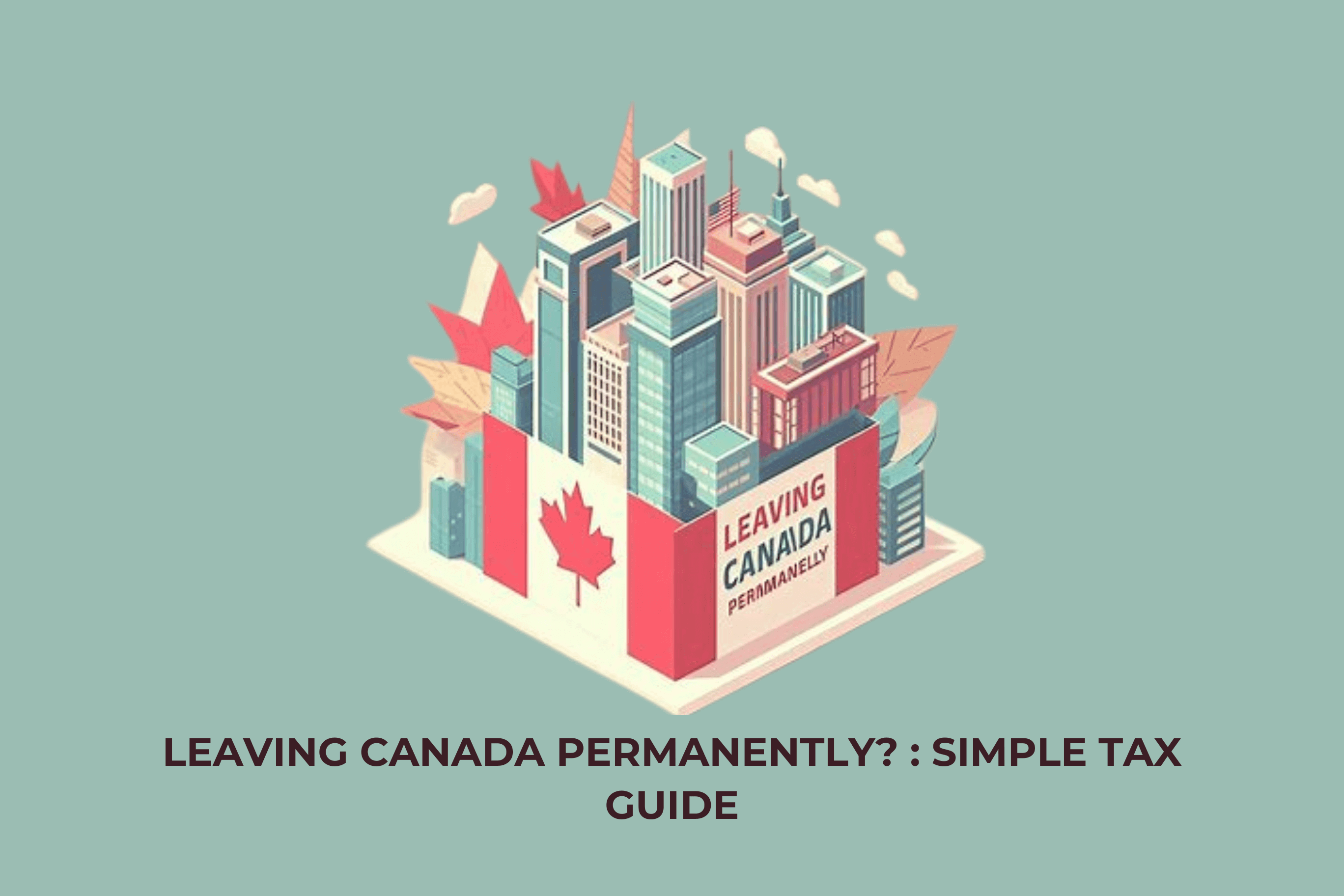
Leaving Canada Permanently? : A Simple Tax Guide
Introduction:
For people permanently leaving Canada, there are significant tax considerations.
This guide simplifies the important points for easy planning and preventing
unexpected issues during your move to leave Canada.
Key Takeaways
|
Key Points |
Details |
|
Residency Status |
Decide if you
still need to pay Canadian taxes. |
|
Departure Tax |
A tax on certain
assets when you leave. |
|
Final Tax Return |
Must file a
final return and may need to pay taxes on worldwide income. |
|
Tax-Free Savings
Account (TFSA) |
Contributions
stop, but withdrawals are possible. |
|
Registered
Retirement Savings Plan (RRSP) |
Contributions
can continue if you have unused room. |
The initial step is determining your residency classification. The Canadian government takes into consideration your connections to Canada, which may include owning a residence, having a partner or family members in the country, and other personal affiliations. Having significant connections could lead you as a tax resident.
Example: If you relocate to a different country but maintain your residence and family in Canada, the government could still count you as a resident for tax purposes.
When you leave Canada, you might have to pay a “departure tax.” This tax applies to certain types of property, like investments and real estate, which are considered sold at reasonable value when you leave.
A departure tax is basically a tax on certain types of property when you leave Canada as a resident. The Canadian government considers it as if you have sold these assets at their current market value on the day you leave the country.
Here is a simple breakdown:
· What is subject to tax?
1. Retirement Policies: RRSPs, RRIFs, and TFSAs
Based on the reasonable value of your assets.
Example: You purchased shares for $12,000, and their value is now $26,000. You need to pay taxes on profit when you leave Canada.
Form T2062:
When a non-resident sells property in Canada, they need to make sure they pay the correct taxes. Form T2062 will help get a Certificate of Compliance from the Canadian tax office, which shows that the taxes are sorted out.
*For more details check our next upcoming blogs…
Final Tax Return
Prior to your departure, make sure to submit a last tax filing. This report will cover all your earnings until the day you depart from Canada. Depending on your circumstances, you may also have to disclose income earned globally.
Example: If you leave Canada in July, your final tax return will encompass all earnings from January to July of that year.
1. Income Reporting: Employment income, Investment income, Rental income, and others like pension.
When you leave Canada, the government proceeds like you sold most of your belongings (properties), even if you did not sell. This can mean you owe taxes on any increase in value (profit). Form T1244 allows you delay paying these taxes until you actually sell the belongings.
*For more details check our next upcoming blogs…
Tax-Free Savings Account (TFSA)
Once you depart Canada permanently, you can not add fund in your TFSA. Although, you can withdraw your money from the account. Possibly, if you take out part of the money from the account when you leave Canada, you will be eligible to add the same amount if you return to Canada.
What Happens to Your TFSA When You Leave Canada?
1. Contributions Stop: You are no longer qualified to add money to your TFSA. (as you become a non-resident of Canada)
Registered Retirement Savings Plan (RRSP)
In the case that you have unused payments in your RRSP, you may keep adding money. However, it is not advisable and also depends on the tax rules of your new nation.
What Happens to Your RRSP When You Leave Canada?
When you leave Canada permanently, you can still maintain your RRSP, but there are specific considerations:
1. Contributions: You can only add money to your RRSP if you have a vacant payment. On the other side, it is possible that this fund requires additional taxation in your new resident country.
Conclusion
Leaving Canada permanently involves several tax considerations. Understanding your residency status, dealing with departure tax, and knowing how to oversee your TFSA and RRSP are essential steps. Planning ahead and seeking professional advice can help you navigate these complexities smoothly.
*Please read our upcoming blogs for a detailed explanation of taxes when you depart Canada.
ASAN Can Help
Empower your financial future with ASAN's expert guidance on Canadian & US Taxation. We strive to align investments with your goals for true financial freedom.
Ready to take the next step?
Contact Us
📞 Phone: +1(613)-981-7097
🌐 Website: asangroupinc.com

